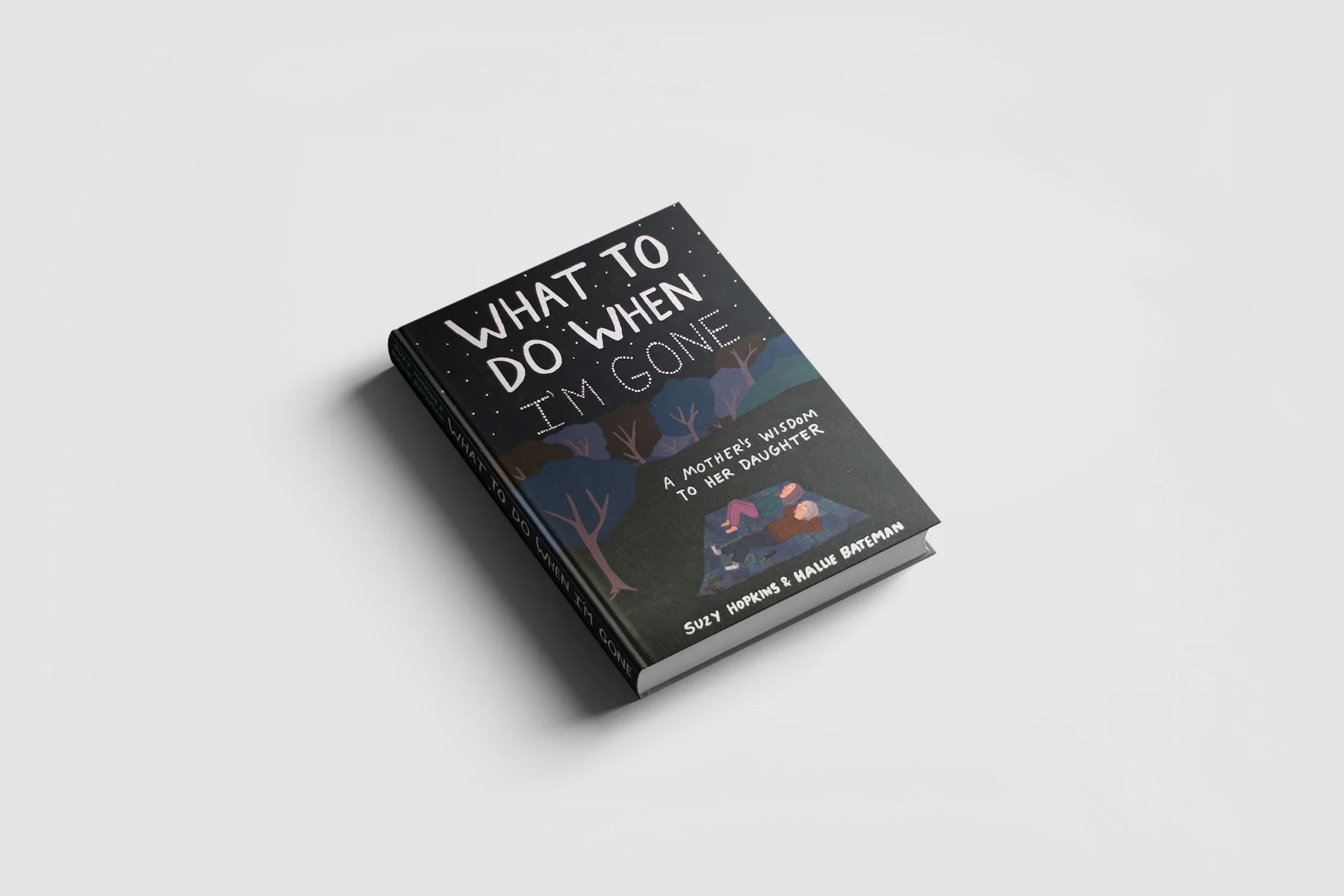Using Art to Cope
- 9 April 2018
- ByAndy Newman
- 2 min read

"Are you with the right person?"
This is a question asked in Suzy Hopkins and Hallie Bateman's new book, What to Do When I'm Gone: A Mother's Wisdom to Her Daughter. "Someone who listens to your problems without trying to solve them" is one way to know you've found the right person.
That's what reading this book feels like.
As a child, Hallie's fear of death nagged at her in the background. Though her mother consoled her, as she got older, she just envisioned death more clearly - in particular, the fear of losing her mother became amplified by the questions of what exactly she'd do each day after she is gone. Finally, she had an idea: Just ask.
So she asked her mother, Suzy, to write step-by-step instructions of how to cope, how to live, and how to move on after she dies, and Hallie brought the book to life with her charming illustrations. It's available for purchase now and serves as a colorful and friendly guidebook for us all on how to keep living even after we lose someone we love.
We spoke with Suzy and Hallie about the book shortly after its release.
What was it like working on a creative project together?
Suzy: I found it fascinating to work with Hallie. We definitely had to navigate to a new place in terms of communication, shifting from a solely mother-daughter dynamic to colleagues. I’m a ponderer; I like to think about things for a while, weigh things up before arriving at an answer I’m satisfied with. She thinks and decides and acts more quickly. At times she was probably frustrated by my apparent indecision, which is really just a slow analytical style.
Most fascinating for me is how Hallie can quickly see how to convert a narrative passage into illustration. It seems so effortless and natural. I loved seeing each completed illustration, and how much it enhanced each segment we were working on. As a writer with only words in my creative toolkit, I’m awed by her “artist brain” and abilities.
Hallie: I think I got my work ethic from my mom - we’re both very obsessive and determined, so we had that in common as we worked. We both needed to see the book become real. But as we reached the most difficult part of the manuscript - that point where it’s not close to finished, but you’ve written enough that you don’t have tons of wiggle room any more - I really struggled to believe in the book. I doubted that people would understand, and I think that made me difficult to work with. Luckily, my mom never wavered in her belief in the book. She kept us moving forward until I got past my block.
What does What to Do When I’m Gone mean to you?
Suzy: The book is my actual advice to all three of my children: Hallie and brothers Ben, 30, and Nick, 26. So it brings a sense of completion, that I’ve shared something important with them - a bit of myself they might otherwise never have known. And years from now, when I really am gone, I hope it provides some comfort.
It also means continuity of sorts. Much of what I’ve learned is a product of my relationship with my own mother, and being with her when she died 15 years ago at 85. She was a children’s librarian and mother of six, practical with lots of common sense and a great sense of humor, which I think skipped through to this book. So it’s meaningful in a generational way; she never had a chance to see any of Hallie’s artwork but would have so loved it and been so proud of both of us. You still want that, long after your mom is gone.
Hallie: It’s the only salve to my fear of losing my mom, although I’m still terrified of it. And besides that, it’s this wonderful thing we’ve done together while we’re both alive!
What’s something new you learned about each other as you created this book?
Suzy: I realized that Hallie is an absolutely amazing artist. I knew she was on an art path from an early age and and that she was talented. But seeing her sketch from our ideas and then work those sketches into final form gave me an even deeper appreciation for her skills and creative force.
Hallie: I don’t know if I learned anything new, exactly. I’d illustrated some excerpts from my mom’s teenage journals years ago, and I’ve always loved her writing and sense of humor so all of that was just confirmed. Generally, though, I learned that even making an entire book about losing my mom didn’t lessen my fear of it happening.
If people take away one thing from What to Do When I’m Gone, what do you want that to be?
Suzy: Love is endless, unbounded by death.
Hallie: It’s worth it to fight past that little block of fear and talk about everything with those you love.
What do you want your headstone to say?
Suzy: The funny thing is, for the page titled “Bury Me,” I had no trouble identifying the songs I want played at my memorial service. But I spent hours trying to come up with an epitaph and just couldn’t. It’s harder than it seems. Maybe it’s fear of eternal commitment, not having the chance to rewrite if time runs out - “Loved kids, dogs, and whiskey”?
Hallie: www.halliebateman.com
You can purchase What to Do When I'm Gone wherever books are sold, including your local indepedent book store, Book Depository (UK), or Amazon. Hallie previously wrote To Be or Not to Be an Artist for Workshop.
9 April 2018
Words by:Andy Newman
- Share